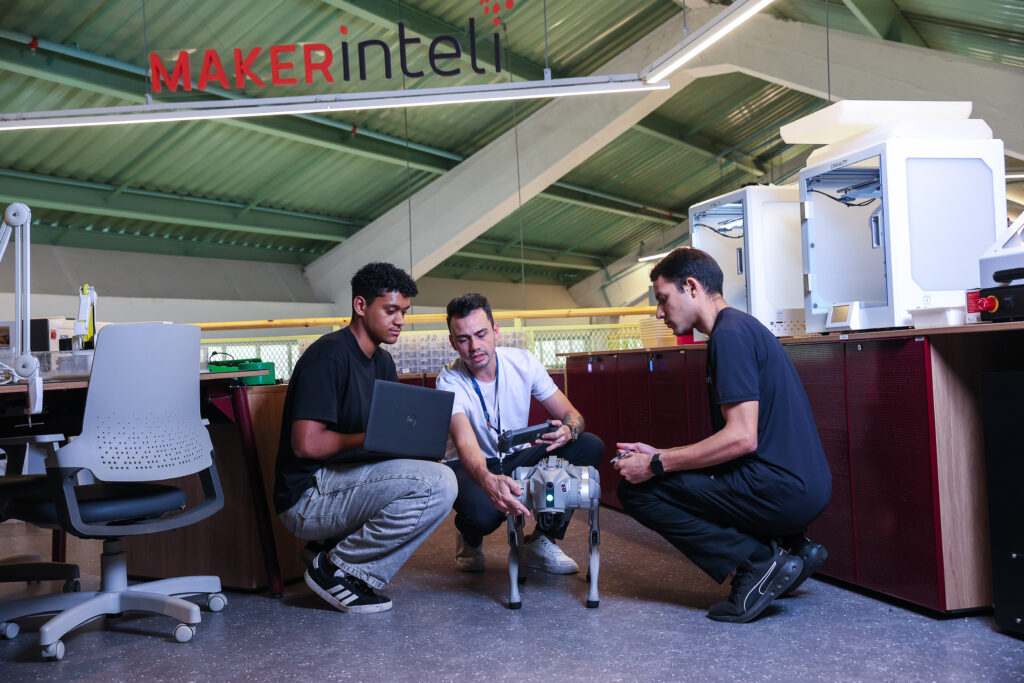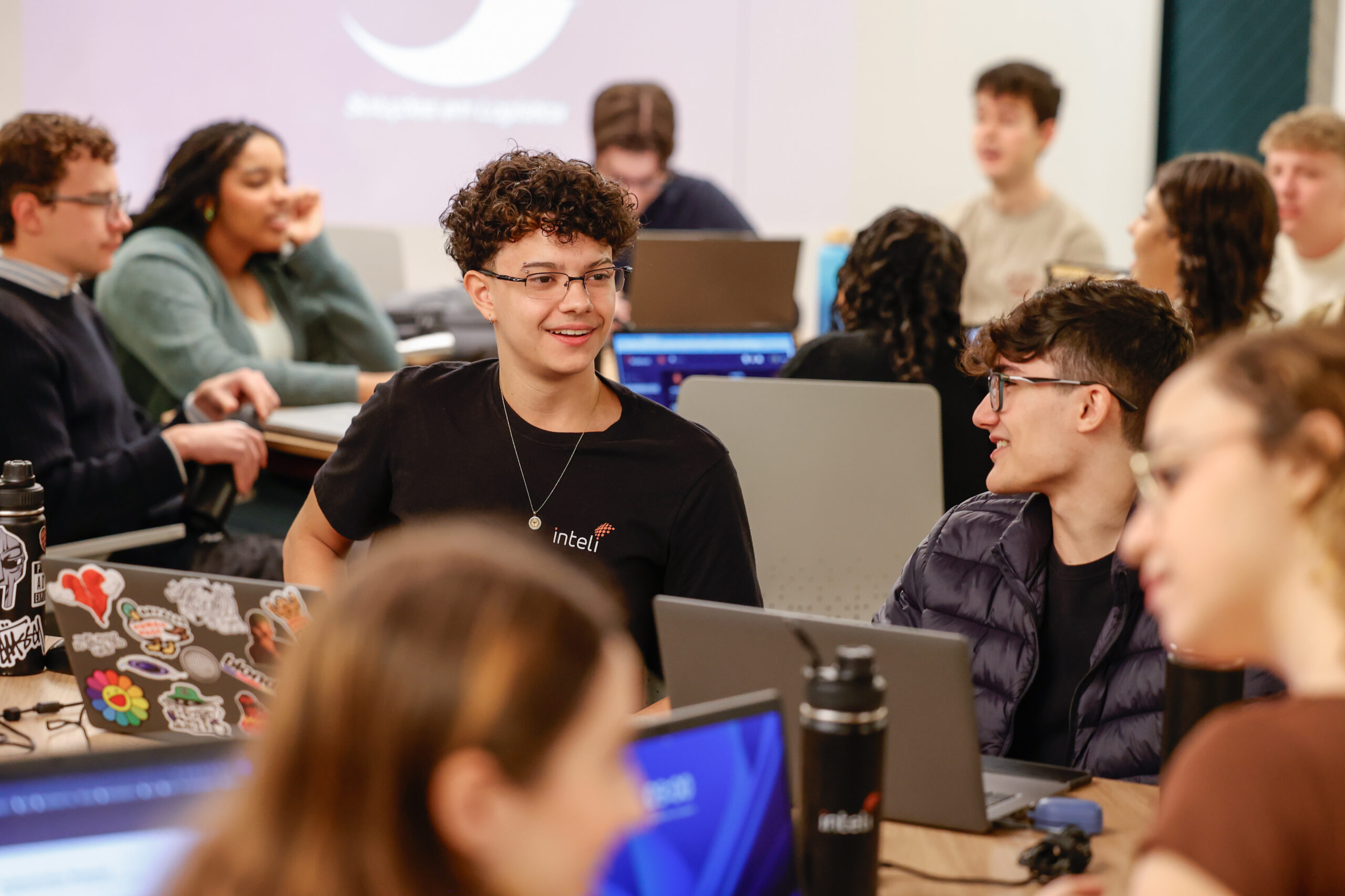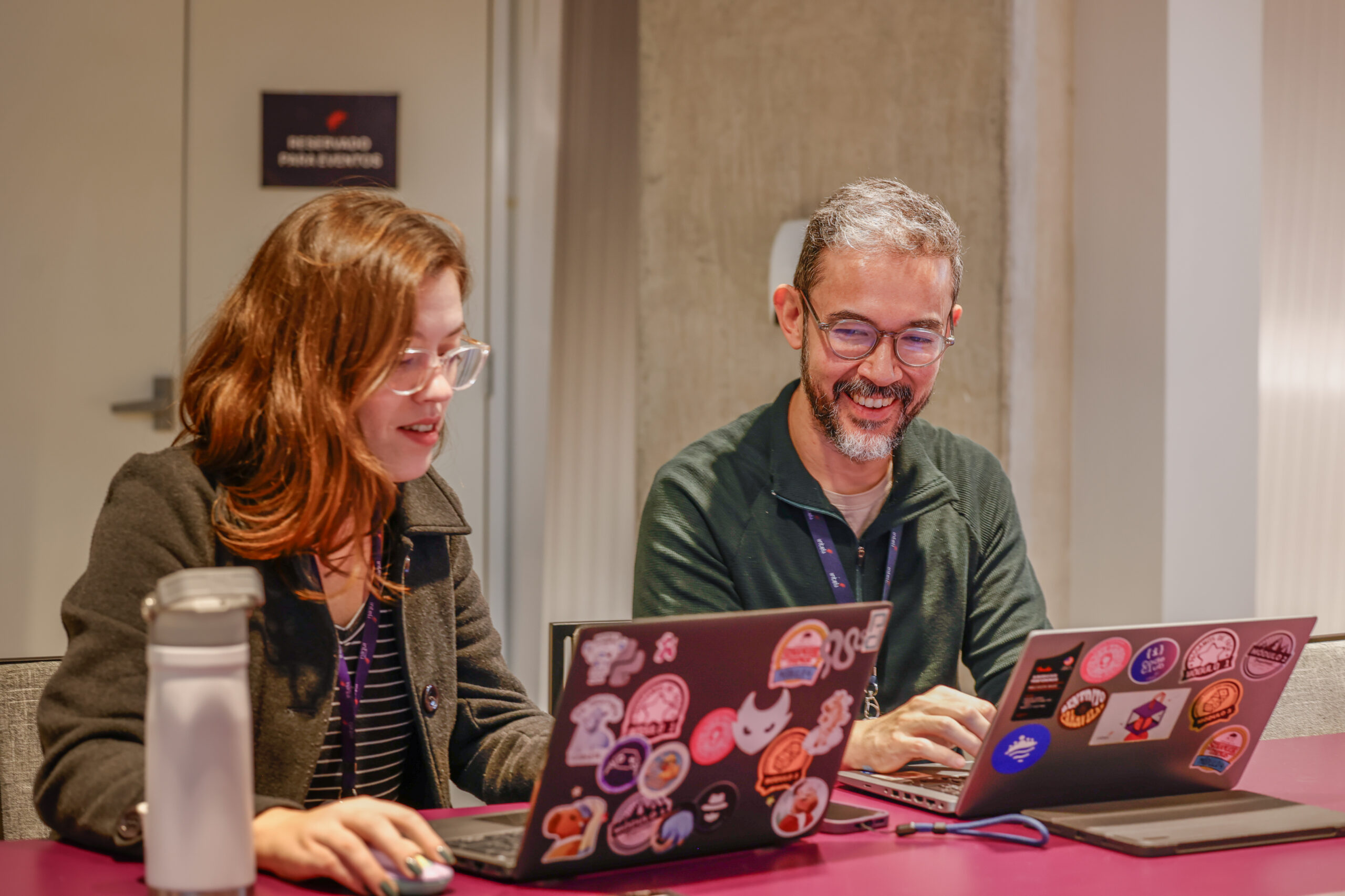by Victor Hayashi and Murilo Zanini (Inteli professors) and Luiza Rubim (Inteli student)
What would it be like if robots could perform tasks such as picking things up, assembling sets of elements and interacting with us during the process? Better still, imagine if we could measure and check the status of many things at the same time!?
Think about the possibilities:
- Refrigerators that inform the manufacturer when a product has come in a larger quantity than necessary.
- Appliances that help people who live alone, reducing accidents.
- Invisible technologies, such as cellular networks, which change generation without us noticing.
Now think that this world is nothing more than our world. And not only is it our world, it's also our present time.
Robots are already present in many areas

It may seem far-fetched to imagine robots carrying out everyday tasks, but they are already part of our routine.
- In distribution centers, they help online purchases arrive faster.
- In hospitals, they support healthcare professionals in sorting medicines.
All of this is built on processes that humanity has evolved over the years.
What does this have to do with Inteli?
In Inteli's courses, we work with projects and partners that allow us to design and architect solutions that use robots and sensors to solve real problems.
Some examples of solutions developed here:
- Separation of medicines
- Aircraft condition monitoring
- Checking fluid transfer systems
Do I need to know anything beforehand to work with these systems?
Great question!
These systems bring something widely used in computing to the physical world: abstraction.
With abstraction, we can represent actions (such as picking up an object or making a robot move) without needing to know the full complexity of the process.
The importance of building in layers
This doesn't mean that you don't need specific knowledge. Quite the opposite.
What happens is that, with abstraction, this knowledge can be built up in layers:
- Every layer you conquer represents more learning.
- This cycle brings the student closer to understanding how the elements work in their entirety.
- Working with these applied systems gives meaning to learning, in what we call meaningful learning.




